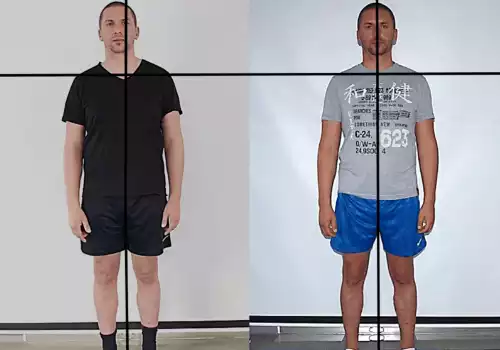It is a common belief among the teachers of (correct) posture and therapists that the weak back and neck muscles are to blame for the hunched posture.
But from my experience, the over-strained muscles on the front of the body are the common cause of incorrect posture. It is a habit that is learned through excessive and too frequent activation of these muscles because of the stress of fear and permanent stress of long hours of sitting or standing and staring at the screen of computer od smartphone. A good way to regain a natural upright posture is by learning and eliminating the concisely uncontrolled muscle activation on the front of the body. By restoring the ability to relax or lower the tonus of skeletal muscles, the need for stronger back muscles is dismissed, like the ones, we already have can easily maintain an upright (straightened) posture. But only if we manage to remove the subconsciously ordered tension on the front of the body with the higher awareness and intentional control. The video in the link below is typical poor advice for standing correctly, upright, and can help you to understand why it is difficult to keep the shoulders neutral over the hips. In the video, the teacher teaches the viewer to do what the brain doesn’t want to do: tighten your shoulders back, squeeze your shoulder blades together, lift your head, but release your buttocks. However, the buttock muscles naturally coordinate with the back and shoulder muscles. The brain that organizes us as a system tightens all the muscles in the back of the body when we want our heads to be lifted and our shoulders tense.
https://www.huffingtonpost.com/2015/01/21/yoga-move-for-confidence_n_6515830.html
Sensory-motor amnesia is the cause of chronically tense muscles on the front of the body as well as of the inability to relax these muscles. This condition in front of the body is called the red light reflex. However, we can get this condition under (conscious) control by learning the AEQ Method®, performing the AEQ exercises, and in case of prolonged and severely activated reflex, also attending the AEQ Method® active therapy, hence eliminate the cause of hunched posture.
Example of hunched posture. Chin pushed too far forward, hump in the lower neck, excessively strained lower back that must keep an upright posture. The center of gravity is pushed forward, and excessive pressure is placed on the calf muscles and the front of the feet.







